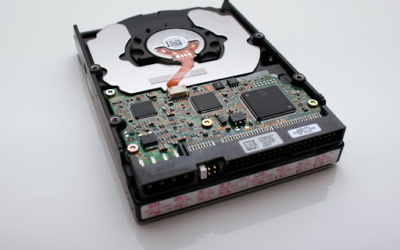Introduction
Think of a warehouse, and what probably comes to mind is a vast space filled with boxes and pallets. But in today’s fast-paced world, that image is only part of the story. Warehouses have gone high-tech, and it’s all thanks to Warehousing IT. Let’s dive into this world where technology reigns supreme and discover how it’s revolutionizing the way we handle goods.
Warehouses Aren’t What They Used to Be
Warehouses have grown up. They’re no longer just places where stuff sits around. Today’s warehouses are bustling hubs of efficiency, and technology is their secret sauce. From receiving goods to shipping them out, technology has its fingers in every pie, making sure everything runs like a well-oiled machine.
The Tech Ingredients
To understand the magic of Warehousing IT, let’s break down the main ingredients that make these modern warehouses tick.
1. Warehouse Management Systems (WMS)
At the core of this high-tech warehouse revolution is the Warehouse Management System, or WMS for short. It’s like the brain of the operation, orchestrating nearly every move. Here’s a taste of what it can do:
- Inventory Wizardry: WMS keeps tabs on inventory levels in real-time. No more guesswork or manual counts. It helps avoid running out of stuff or having too much of it.
- Order Whiz: It’s your go-to for order processing. Need to pick stuff for an order? WMS generates the list, assigns tasks to the right folks, and even finds the quickest picking routes. That means fewer mistakes and speedier deliveries.
- Space Saver: Warehouses can be like a game of Tetris with pallets. WMS makes sure everything fits like a glove by allocating storage spaces based on what’s inside. It ensures that frequently picked items are close at hand.
- Tracking Guru: WMS keeps an eagle eye on where everything is. Every product’s journey, from when it’s received to when it’s shipped, gets logged. It’s a lifesaver for quality control and meeting those pesky regulatory standards.
2. Automated Material Handling Systems (AMHS)
Automation is the name of the game in modern warehouses, and the Automated Material Handling Systems (AMHS) take center stage. These are like the robot workers that keep things humming along:
- Conveyor Champions: These are the conveyor belts that whisk items from one spot to another. They’re great for tasks that are repetitive and need to be done fast.
- Robo-Cranes: Automated Storage and Retrieval Systems (AS/RS) use crane-like robots to grab items from high-up shelves. This tech saves vertical space and reduces the need for human intervention.
- Sorting Superstars: Sortation systems use all sorts of tricks, like chutes and sensors, to sort and divert products based on where they need to go.
- Warehouse Bots: Robots are hitting the warehouse floor. Guided by sensors and smart algorithms, they pick, pack, and even transport stuff around.
3. Internet of Things (IoT) Sensors
Ever heard of the Internet of Things (IoT)? It’s all about smart devices talking to each other, and warehouses are big fans. They’re dotted with IoT sensors that do some pretty cool things:
- Temp and Humidity Watchdogs: These ensure that goods are stored at the perfect temperature and humidity, essential for things like medicine or food.
- Location Scouts: IoT sensors help keep tabs on where goods are in the warehouse. It’s like a digital treasure hunt in real-time.
- Machine Doctors: They monitor the health and performance of equipment like forklifts and conveyor belts. When they spot trouble, maintenance gets scheduled before things go haywire.
- Security Guardians: Sensors help keep the warehouse secure by alerting folks when something fishy’s going on, like an unauthorized entry.
4. RFID and Barcodes
You might think barcodes are so 20th century, but they’re still a big deal in the warehousing world. RFID (Radio-Frequency Identification) and barcodes help with quick and accurate product identification. Here’s the lowdown:
- RFID Magic: RFID tags have microchips and antennas that send product info to RFID readers. It’s hands-free and real-time, perfect for massive warehouses.
- Barcode Basics: Barcodes are those lines you see on products. A scanner reads them to figure out what a product is. They’re cost-effective and super common for tracking items at different points in the supply chain.
5. Data Analytics and Artificial Intelligence (AI)
Data is the new gold, and warehouses generate heaps of it daily. That’s where data analytics and AI come in. These technologies are like the Sherlock Holmes of warehousing:
- Crystal Ball for Demand: They predict future demand patterns, helping warehouses know what to stock up on.
- Route Optimization Wiz: AI figures out the most efficient routes for picking and delivering orders. It’s like having a GPS for warehouse workers.
- Quality Control Whizzes: They spot quality issues in real-time, so nothing dodgy gets shipped out.
- Labor Management Maestro: AI helps manage warehouse worker schedules, ensuring the right people are on the floor when they’re needed most.
Why Does All This Tech Matter?
You might be wondering why warehouses are going all-out with tech. Well, there are some pretty compelling reasons:
- Speedy Delivery: In the age of Amazon Prime, speedy delivery is a must. All this tech ensures that orders get picked and shipped faster than ever.
- Fewer Errors: Humans aren’t perfect. We make mistakes, but machines? Not so much. Tech-driven processes mean fewer errors in orders and inventory management.
- Cost Savings: Automation means fewer human workers are needed for repetitive tasks. That translates to cost savings for businesses.
- Space Optimization: Tech helps warehouses make the most of their space. When items are stored efficiently, you don’t need as much room.
- Sustainability: Efficiency is eco-friendly. When warehouses use resources like space, energy, and labor more efficiently, it’s a win for the environment.
Challenges in Warehousing IT
For all its advantages, Warehousing IT isn’t without its fair share of challenges:
- Cost of Implementation: All this fancy tech doesn’t come cheap. Installing WMS, AMHS, and other systems can be a significant upfront investment.
- Integration Headaches: Getting all these systems to play nice together can be tricky. Sometimes different systems don’t speak the same tech language, causing integration headaches.
- Resistance to Change: Not everyone embraces new technology with open arms. Workers may need time to adapt to these changes and may resist them initially.
- Data Security and Privacy: With so much data flowing through warehouses, data security is a top concern. Preventing data breaches and ensuring customer privacy is a must.
- Maintenance Challenges: Keeping all this tech in tip-top shape is no small feat. Neglecting maintenance can lead to costly breakdowns and downtime.
Future Trends in Warehousing IT
The world of Warehousing IT is always evolving. Here are some future trends that could reshape the industry:
- Robotics and Automation Take Center Stage: The use of robots and automation will continue to grow. Robots will become more collaborative, working alongside humans efficiently.
- AI and Machine Learning Go Big: AI and machine learning will play an even more prominent role in predictive analytics. They’ll help warehouses anticipate demand, optimize routes, and even predict equipment failures.
- Augmented Reality (AR) in Warehouses: AR devices will become standard tools in warehouses, aiding workers in tasks like order picking and maintenance.
- Sustainable Warehousing Practices: With environmental concerns on the rise, warehouses will adopt more sustainable practices. This includes energy-efficient lighting, sustainable materials, and eco-friendly packaging.
- Edge Computing Takes Hold: Edge computing, where data is processed closer to the source, will reduce latency in data-intensive warehousing tasks. It’ll be a game-changer for IoT applications.
Conclusion: Warehousing IT – The Way Forward
Warehousing IT has transformed the world of logistics and supply chain management. From the brainy Warehouse Management Systems to the nimble robots on the floor, technology has breathed new life into warehouses.
While there are challenges to overcome, the benefits are clear. Speedy deliveries, fewer errors, cost savings, space optimization, and sustainability are all within reach thanks to Warehousing IT.
As technology continues to advance, warehouses will become even smarter and more efficient. The future of warehousing is exciting, promising to further optimize supply chains, reduce environmental impact, and enhance the overall customer experience. So, next time you order that gadget or a pair of sneakers online, remember that Warehousing IT is working tirelessly behind the scenes to make sure it reaches your doorstep on time.




